
Wall of Dignity
In 1967, Detroit experienced one of the most brutal race rebellions in its history. In the early hours of June 23rd, the police raided an after hours club. Expecting to find a few people inside, they instead found 82 individuals. Everyone was arrested and escorted from the building, and as this happened, a crowd of 200 people gathered. As the night slowly crept into the next morning, violence and looting emerged on Twelfth Street, and the Detroit rebellion was underway. The rebellion carried on for five days. Mayor Jerome Cavanagh initially sought to quash the uprising with police units, but failed to gain support for this tactic as many African Americans in the city deemed the police the problem. In 1968, a year after Detroit’s violent rebellion, a local community organizer named Frank Ditto contacted muralists Bill Walker and Eugene Eda Wade, asking them to create a mural in his local community. Wanting to create a mural that could project an expression of black unity during a time of racial pain, Walker and Wade set about creating the Wall of Dignity. Painted on the façade of an abandoned ice-skating rink, the mural was broken down into three main sections. The top half of the mural depicted diasporic scenes of ancient life in Africa, whilst the middle section functioned as a collection of portraits of prominent African American men and women who sacrificed their lives by fighting for black liberation throughout history. The faces of Marcus Garvey, Malcolm X, Martin Luther King Jr., Mary McLeod Bethune and Stokely Carmichael line the wall. The bottom section of the mural, enveloping the words ‘The Wall of Dignity’, depicts scenes of enslavement. Silhouetted figures of manacled men and women stretching their chains taut as they stretch for freedom are countered by figures raising their unshackled hands to the sky in moment of liberty. Towards the left-hand side of the mural, a poem titled ‘Slave Ship’ reads:
I am a prince, speak with respect I shall not be chained to your Bloody deck To live in this filth and stench? Ooooaaee a poor soul have died on his bench This meaning does burst the drums of my ears Long hours from my home seem like years A prince to ear the food of jackals!! My arms, my leg bleed from your shackles You must look to my woman What had been done to one so sweet, so mild? AAAHHH! Within here was my child. Strange tongued-golden haired man I will not journey to your land. Leave me…leave me be… Cast my carcass into the sea The sea.. Black..Black like me.
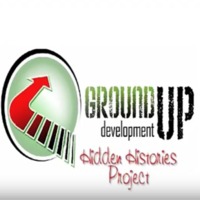
Hidden Histories
This project worked with young people from Lambeth, South London, to examine the history of West Africa, its peoples and their rich heritage, culture and traditions, as well as the impact of slavery and the African diaspora. Using film production, creative workshops, and visits to heritage sites, the emphasis was on the positive impact of African history and its effect on the aspirations and self-esteem of young people.
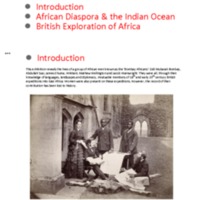
Bombay Africans
Bombay Africans 1850-1910 was exhibited at the Royal Geographical Society as part of the wider ‘Crossing Continents: Connecting Communities’ project, which with community partners aimed to develop new resources to advance the importance of geography. Based on the research of Clifford Pereira and with community consultation partners, Bombay Africans explored the histories of a group of African men who assisted British explorers such as John Hanning Speke, Richard Burton and David Livingstone on mapping expeditions in East Africa in the late 19th century. The name 'Bombay Africans' was given to Africans who had been rescued from the slave ships operating in the Indian Ocean. The exhibition examined the roles of these men in the anti-slavery movement and in Christian organisations like the Church Missionary Society. Focusing on the East Coast of Africa and the slave trade routes in the Indian Ocean, the exhibition also explored enslavement, forced migration, liberation and the African diaspora in the Asian subcontinent.
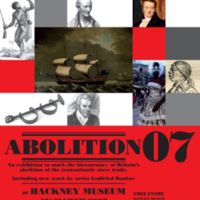
Abolition 07
Hackney Museum's Abolition 07 exhibition told the story of British involvement in the transatlantic slave trade, the resistance to it, and its abolition, and in particular emphasised the involvement of Hackney's residents in the abolition movement. The display included new artwork by Godfried Donkor in collaboration with young Hackney artists. A film of interviews with Hackney residents, Hear My Voice, was produced. Over 1200 children from Hackney Primary Schools took part in poetry workshops at the museum with poets Adisa and Baden Prince. Their poems and responses were published in the booklet 'And Still I Rise'.
The research into Hackney's connections to the transatlantic slave trade continued in 2013-2015 with 'Local Roots / Global Routes', a collaborative project between Hackney Museum and Archives and the Legacies of British Slave-ownership project.
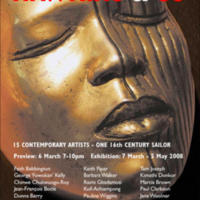
Hawkins & Co
Curated by artist Kimathi Donkor, and first exhibited at London’s Elspeth Kyle Gallery, Hawkins & Co referred to the Elizabethan mariner Sir John Hawkins, whose 16th century voyages to Africa and the Caribbean pioneered the British slave trade. In 2008, an expanded version of the project, featuring over 70 artworks from 15 contemporary artists, was exhibited at Liverpool’s Contemporary Urban Centre. The display included artworks by Keith Piper, Barbara Walker and Raimi Gbadamosi, and a new commission from Jean-François Boclé. Each piece on show explored a different aspect of the culture and history of the transatlantic African-Caribbean diaspora affected by Hawkins’ legacy.
In 2017, a key work from the project - 'UK Diaspora' - was added to the permanent collections of the International Slavery Museum.
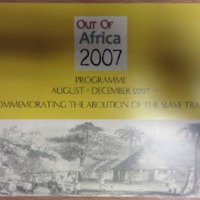
Out of Africa 2007
The African and African Caribbean Kultural Heritage Initiative (ACKHI) is a not-for-profit Black Afrikan-led community organisation, with the aim is to promote, protect and preserve the history, heritage and culture, of peoples of Black African heritage living or working in Oxfordshire. The Out of Africa programme of events in 2007 included an exhibition of books about slavery and the slave trade, which toured Oxfordshire libraries, and performances of African music and contemporary dance. The ‘Remembering Slavery’ commemorative service was held in Christ Church Cathedral. ‘Connections’ was a research project looking at Oxfordshire’s links to the system of slavery and the slave trade. ‘InTentCity’ was a visual arts project, in partnership with Fusion Arts, bringing together cultural groups, primary schools and artists to transform tents into works of art – one theme addressed was ‘Freedom’. Reflecting the legacy of the system of slavery and the slave trade, ‘Common Threads’ was an exhibition of textile work by the Textiles for Peace group, local women representing multi-cultural Oxfordshire. In ‘Ancestral Souls’, the African Women’s Art Collection (AWAC) collaborated with women of African descent to produce and exhibit 200 dolls to represent the diaspora of African peoples.
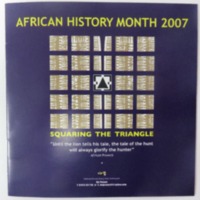
African History Month 2007: Squaring the Triangle
Squaring the Triangle was the theme of African History Month 2007 in Suffolk. The programme was co-ordinated by the Nia Project (a cultural, arts and heritage project) and explored the history and legacy of slavery through film, literature, exhibition, music and debate. The theme of Squaring the Triangle was underpinned by the African proverb, ‘Until the Lion tells his tale the tale of the hunt will always glorify the hunter’. Highlights included the Nia Memorial Lecture, given by the producer-director Pam Solomon-Fraser. Nubian Films short season looked at the current legacy of slavery and the Diaspora of African peoples. Talks, workshops and debates covered issues such as reparations, retribution, resistance, and educational guidelines for parents on how to discuss the African slave trade with children. Special recognition was given in the programme to Ghana’s 50th anniversary as an independent state. There were heritage walks around Ipswich to uncover some of the cultural connections with Africa, the Caribbean and Suffolk. A Youth Day Conference hosted by the Zimbabwe Youth brought together young people from the community to use music and poetry to explore their ideas on the legacy of the slave trade. Historian Maureen James and representatives from Suffolk County Council led pupils from local schools in researching the anti-slavery movements, with particular reference to the Clarkson family.
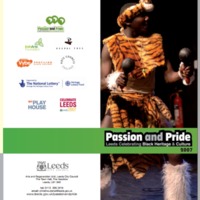
Passion and Pride
Passion and Pride was a creative partnership project bringing together Leeds City Council's Arts and Regeneration Unit with twelve local community organisations. Building on momentum established through Black History Month, the performances, exhibitions and workshops celebrated black heritage and culture in Leeds during 2007. Highlights included the performance of 'Grandma's Story' at West Yorkshire Playhouse by the 10-2 Club, a short play about the real life experience of living through slavery.
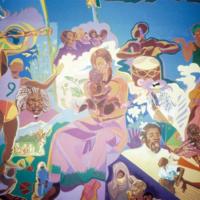
Races of the Student Population
In 1976, the Mexican muralist Manuel Martinez created a mural at Auraria College titled Races of the Student Population. It depicts the antislavery leader Frederick Douglass alongside figures of the Black Power Movement including Bobby Seale, and figures and symbols of the African diaspora.
![Don Rodgers, Our Brothers and Sisters, 100th and Halsted Streets [Black Neighborhood], Chicago, 1984.jpg Don Rodgers, Our Brothers and Sisters, 100th and Halsted Streets [Black Neighborhood], Chicago, 1984.jpg](https://486312.frmmmguz.asia/files/square_thumbnails/ade8cb4554aca77fae33825bf55434dc.jpg)
Our Brothers and Sisters
Titled Our Brothers and Sisters, this mural depicts figures of black history, including the abolitionist Frederick Douglass and also Harold Washington, Martin Luther King Jr., Booker T. Washington, Malcolm X, W.E.B. Du Bois, and Louis Armstrong.